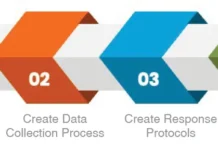Karen Kromat is the sustainable program manager at Case Paper, an 80+-year-old paper and paperboard merchant, converter and laminator. Kromat’s story started over 30 years ago as a graphic designer. Her diverse experience has touched many platforms within the industry. Kromat was a co-owner in a marketing firm, and she spent 12 years working for European and Asian paper mills, selling paper and paperboard in the Midwest. Kromat has been involved in product development and business development projects. She now has landed in the sustainability arena at Case Paper.
How did your career develop in the paper and printing industry, and what is your role now?
In the late 1980s, I started my career as a graphic designer during the time period before Apple had launched its Mac products (Macbook and other items). I created printer art boards by hand. Purchasing print – and knowing what paper/paperboard can and cannot do for my artwork – led me on this paper journey. Someone once told me, “The materials you use to print on are your arts’ canvas.” This stuck with me for every project I printed. I made sure my print project would achieve the results I wanted because I selected the right paper (canvas) for the project.
I worked for a German paper/paperboard mill and for an Asian mill. Later, I started focusing on paperboard for the folding carton and packaging industry. Back in the late 2000s, I was involved in writing another company’s sustainability policies. At Case Paper, I was in product development for seven years and rediscovered my passion for sustainability. With all the changes that were happening in our industry around sustainability, it made sense to move in that direction. I currently am involved with paperboard, packaging and sustainability.
How do you see the industry embracing global trends such as the circular economy and sustainability demands from brand owners and consumers?
It has been slow going, especially in the US vs. other countries. Regulations in other countries have surpassed the US. We still have individuals thinking that global warming is not real. Having this mindset for sustainability will put the US behind. In my opinion, it already has.
I am hoping with all the new Securities and Exchange Commission (SEC) regulations, this will allow change to start happening faster. The SEC’s newer regulations, in addition to the following developments, should have a positive impact on sustainability:
- Diversity, exclusivity and inclusions (DEI) changes within the board of directors as part of the SEC’s strategic plan
- Climate change reporting standards and risk impact requirements
Greenhouse Gas (GHG) emissions now are more relevant than ever. Brands are requesting supplier documents. Suppliers that have better policies and sustainable practices in place, I believe, will maintain business while the suppliers that do not will lose business. The big brands have been involved with R&D and looking at material options – how is the item made, how is the item printed, how is the item used and how is it shipped? They have made commitments to lower their carbon footprint.
What are the biggest challenges the paper and printing industry faces when jumping into sustainability at these facilities?
- Starting its Environmental, Social, Governance (ESG) platform, or a sustainability policy of some kind.
- Measuring the data for Scope 1-2-3. GHG emissions data that needs to be collected. Not enough printers know where to start or how to start. The Scope 3, along with other supplier requests, have increased drastically from our print partners.
- With all the new regulations in the US, the EU printers will need to become educated in collecting data.
- SEC has put in some new regulations that will create change. There currently are regulations in place for public businesses; however, new regulations will affect the private business sector.
- Supply chain partnerships will need to become more defined.
How should the industry respond to successfully grow and thrive?
Become educated – knowledge is power. Look for resources to aid the business, such as trade publications. Ask questions. Have conversations with other business leaders and ask what they are doing.
Yet, in spite of the importance, several printers have told me no one is asking for sustainability requirements in recent projects. Some have disclosed that their return on investment (ROI) has not started to pay off for the sustainability initiatives they have made internally. They do it because they know it is the right thing to do.
Brands will no longer do business with companies that do not have sustainable business strategies as part of their corporate culture. To be successful, every company needs to be on board with sustainability efforts. This mindset is not going away.
Which markets/verticals are growing their use of print and print packaging? What is influencing that growth?
Single-use plastic bans and similar initiatives have changed the way consumers perceive packaging. Getting rid of single-use plastics was what started the ball rolling.
The molded-fiber market is replacing plastics. There now are printed blister packs that are 100% molded fiber.
Health and beauty was one of the first industries to look at making drastic changes to packaging and the use of plastics. These changes currently are on the shelves. TikTok has exploded as a way to advertise health and beauty products. Today, nine-year-old girls and older are purchasing skin-care products. This is a whole age market that never existed prior. I saw it with my granddaughters and their friends. Social media has changed the way new products are launched.
Another popular trend within the sustainability initiative is natural products. The natural product market is strong with the health and beauty and food and beverage arenas.
What are your predictions for the paper and print industry in the next five to 10 years?
- Product packaging will change, and how it appears on a shelf will evolve.
- Product labeling will become stricter – no more greenwashing.
- Blister packaging is undergoing changes to remove plastic.
- Refill and reuse markets will become a mainstay.
- Paper will replace glass.
- Eco-friendly paper alternatives will be developed, such as seaweed replacing wood fiber.
- Printing presses will continue to get better.
- Digital printing will get faster and with higher resolutions.
- Molded fiber cartons will continue to grow.
- Sustainability will be the norm.
- Artificial Intelligence (AI) will change how we live and how we do things. It already has.





